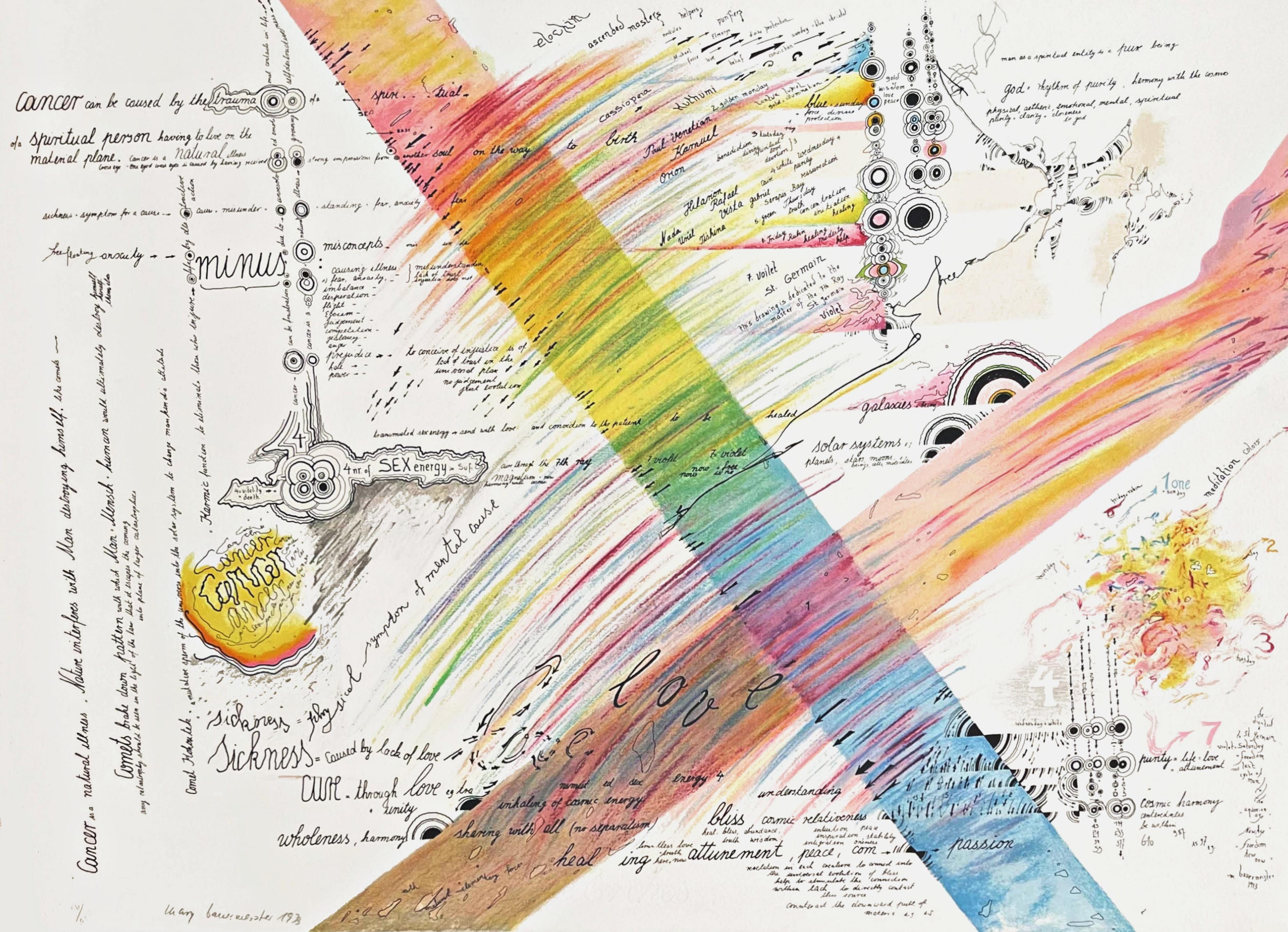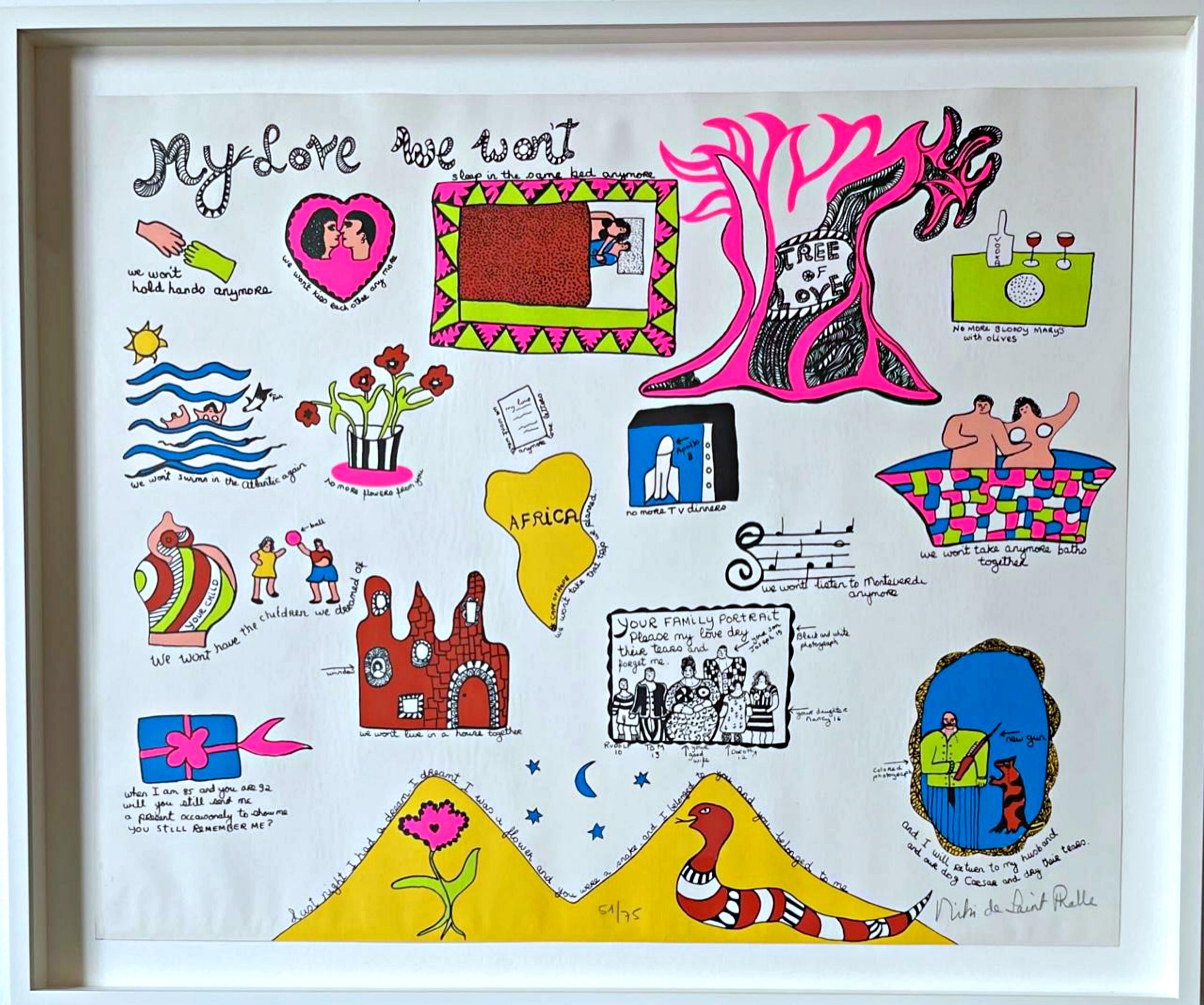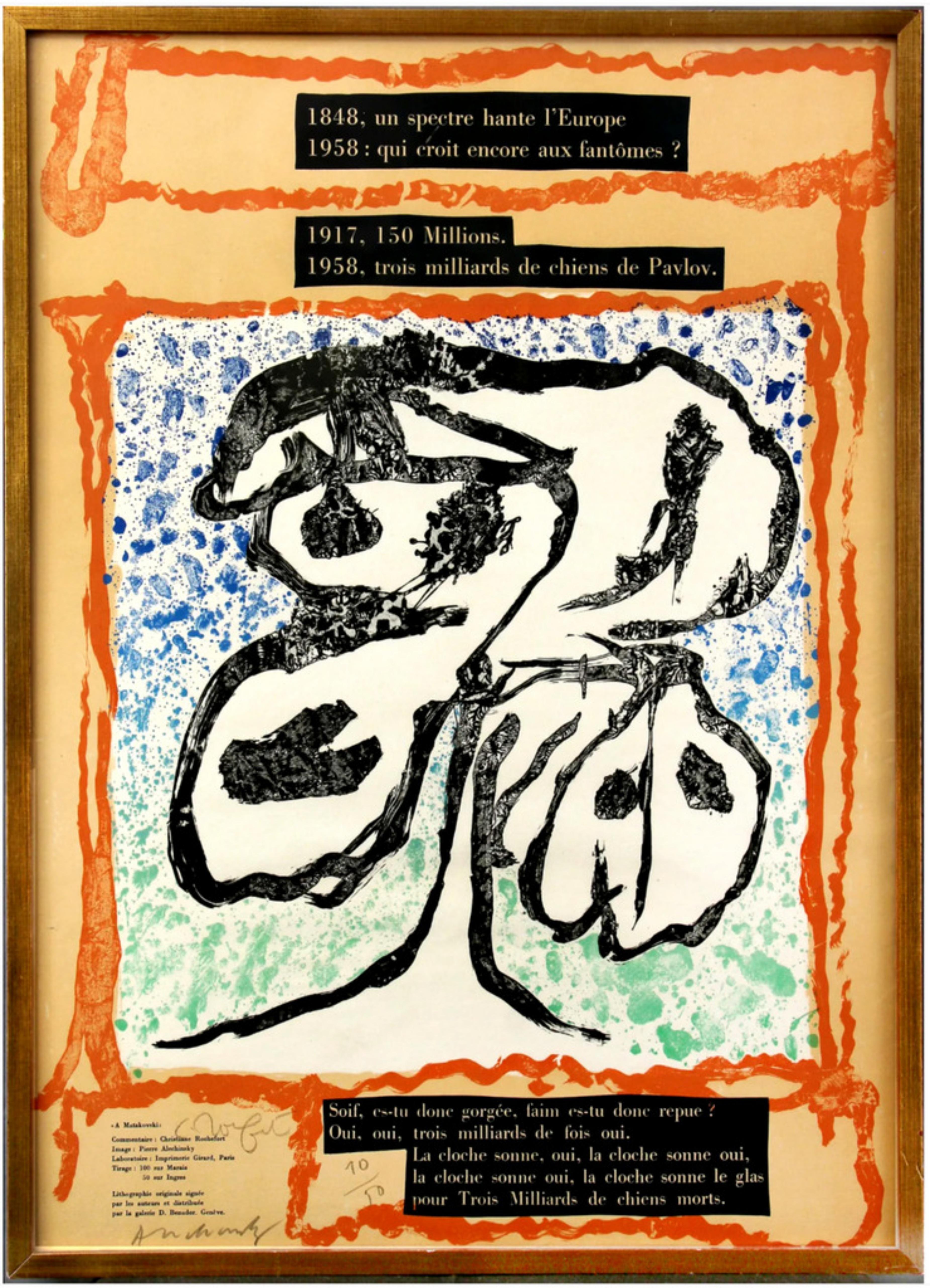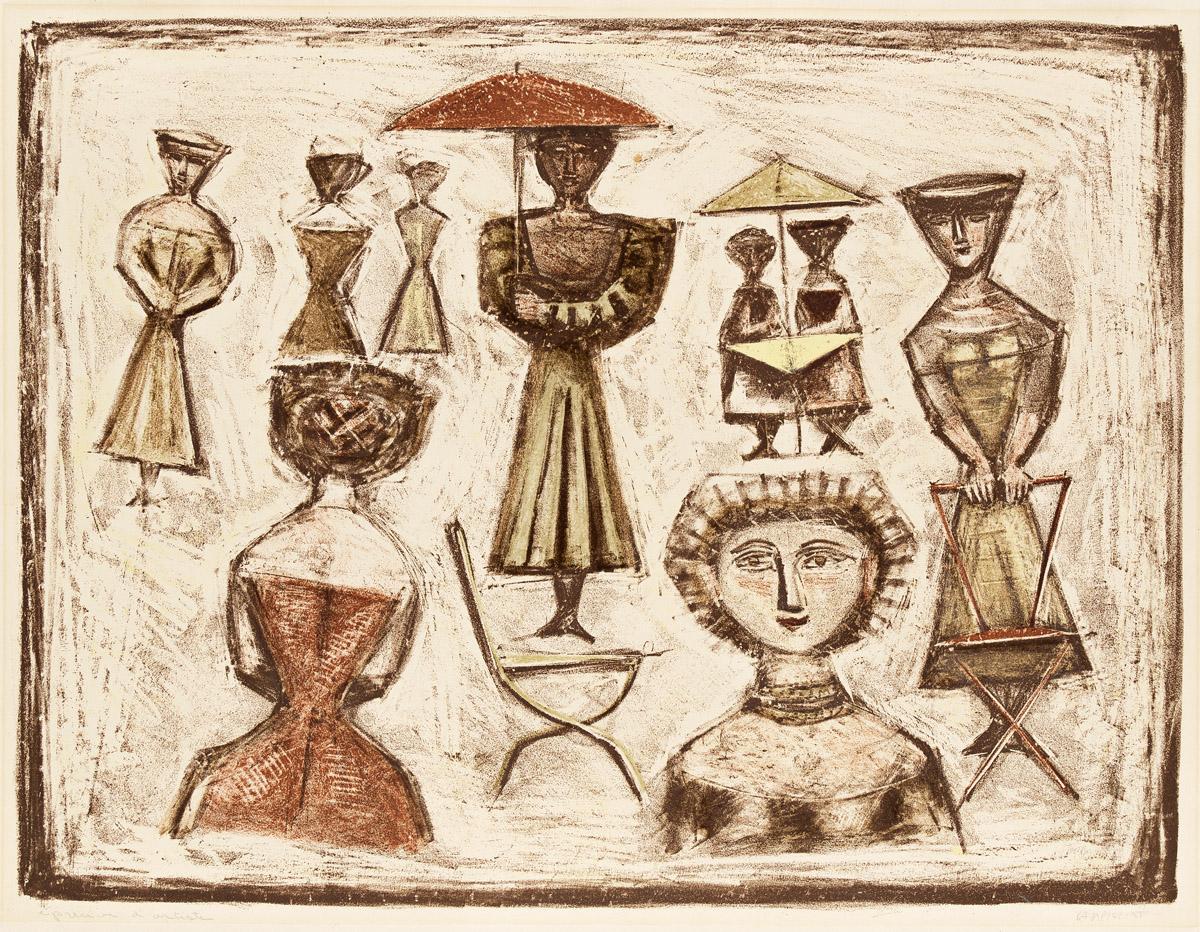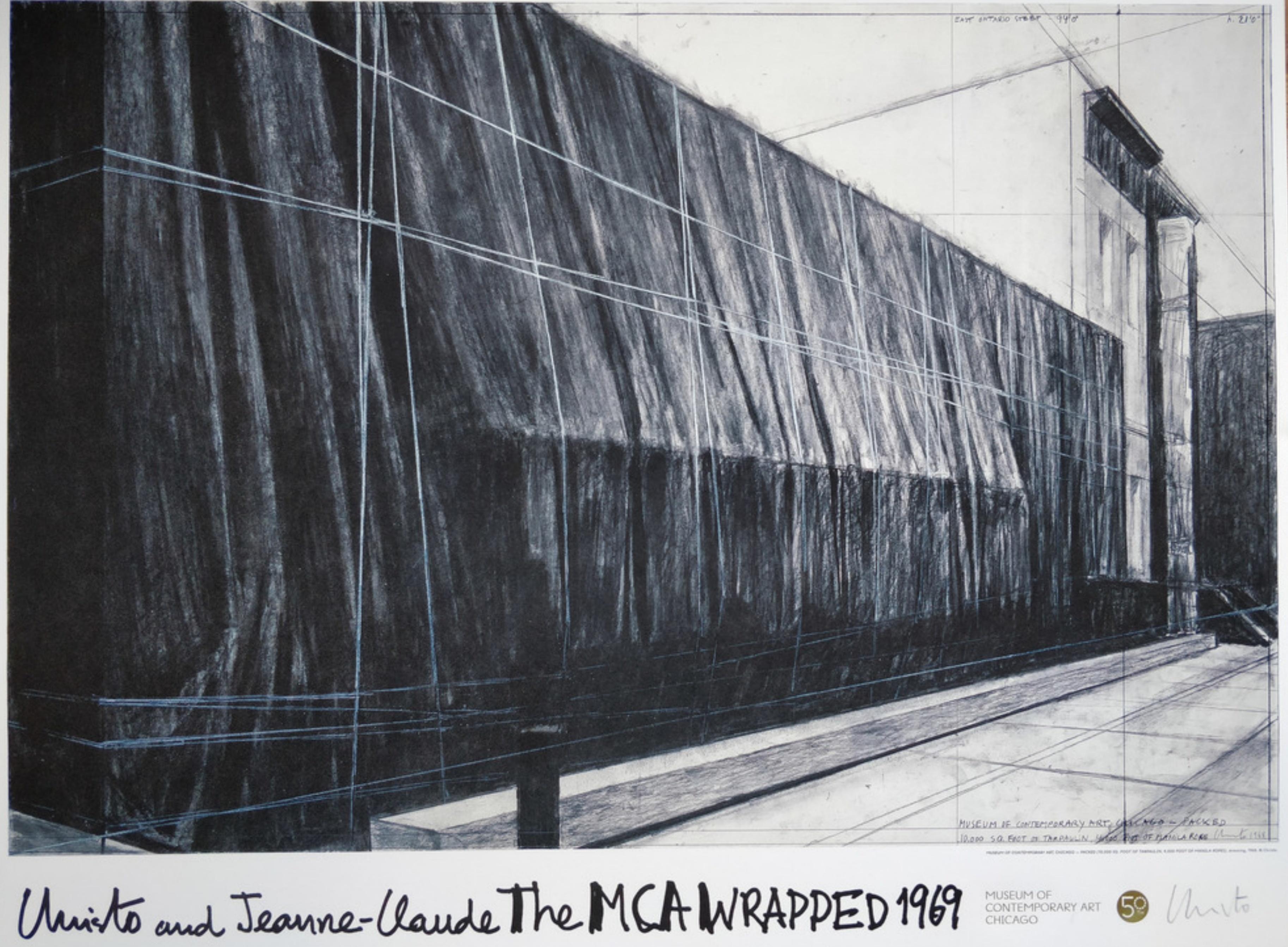Elizabeth CatlettBlues, important signed/N lithograph by renowned African American artist Framed1983
1983
About the Item
- Creator:Elizabeth Catlett (1915 - 2012, American)
- Creation Year:1983
- Dimensions:Height: 36 in (91.44 cm)Width: 26 in (66.04 cm)Depth: 1.5 in (3.81 cm)
- Medium:
- Movement & Style:
- Period:
- Condition:This work is elegantly matted and framed in a hand made wood frame with beveled edges and blue accents in UV plexiglass.
- Gallery Location:New York, NY
- Reference Number:1stDibs: LU1745212973532
Elizabeth Catlett
Promoting social change was Elizabeth Catlett’s prime motivation as an artist. The granddaughter of enslaved people, Catlett was born in Washington, D.C., in 1915 and spent her adult life driven to create sculptures, prints and paintings that would reach, celebrate and uplift those who were barely visible in art.
“I have always wanted my art to service Black people — to reflect us, to relate to us, to stimulate us, to make us aware of our potential,” Catlett said of her work in the 1978 book Art: African American. She studied art history, drawing and other disciplines at Howard University, and as an MFA student at the University of Iowa, her mentor, the painter Grant Wood, advised her to “take as her subject what she knew best.” As she later told an interviewer, “The thing that I knew the most about was Black women, because I am one, and I lived with them all my life, so that’s what I started working with.”
The centerpiece of Catlett’s spring 1940 thesis project, Negro Mother and Child — a figure of a Black mother embracing her child, carved from Indiana limestone — was awarded first place for sculpture at the American Negro Exposition in Chicago held that year.
Catlett taught art at Dillard University in New Orleans — where she battled discrimination daily — and met her first husband, artist Charles White, while living in Chicago. She resigned from Dillard in 1942 and moved to New York City. There Catlett befriended painter Jacob Lawrence and studied lithography and other media at the Art Students League. Inspired by her studies with Ossip Zadkine, she began to incorporate abstract forms into her wood and stone sculptures.
In 1946, a grant supported her travel to Mexico to study its murals and graphic art. As Catlett had experienced the barbaric and deeply destructive system of racial segregation that the Jim Crow laws enforced in the United States, Mexico felt like a welcome escape. She would make the country her home and create much of her work there, divorcing White and marrying painter and printmaker Francisco Mora of the Taller de Gráfica Popular (People's Graphic Workshop), or TGP, in 1947. She collaborated with TGP, a graphic arts workshop dedicated to social issues located in Mexico City, on a number of works, including one of her best-known linoleum cut prints, Sharecropper (1952). The heroic depiction of an anonymous farm worker was intended to draw attention to the plight of Black tenant farmers who were ruthlessly exploited by the era’s white landowners.
Another iconic work of Catlett’s is Black Unity (1968), a raised fist sculpted from cedar, smooth and gleaming, with one side taking the form of two faces that resemble carved African masks. In the same year, the raised fist, a powerful symbol of the Civil Rights struggle and emblem of the Black Power movement, had been immortalized by two Black American athletes, John Carlos and Tommie Smith, who raised their black-gloved fists during the playing of the “Star-Spangled Banner” at the Summer Olympics in Mexico City.
Catlett was a professor of sculpture at the National Autonomous University of Mexico’s School of Fine Arts in Mexico City from 1958 until 1976, when she retired to focus on making art, exhibiting extensively in the years that followed. In 2003, she completed the Ralph Ellison Memorial in New York’s Riverside Park. That same year she received a lifetime achievement award from the International Sculpture Center. Her work is in the collections of museums worldwide, including the Smithsonian American Art Museum, Museum of Modern Art and the Metropolitan Museum of Art.
Find a range of authentic Elizabeth Catlett art today on 1stDibs.
- ShippingRetrieving quote...Ships From: New York, NY
- Return PolicyA return for this item may be initiated within 1 day of delivery.
- My Love We Wont - coveted, whimsical 1960s silkscreen by beloved female artistBy Niki de Saint PhalleLocated in New York, NYNiki de Saint Phalle My Love We Wont, 1968 Lithograph and silkscreen on wove paper Signed and numbered 51/75 in graphite pencil on the front Frame included: elegantly floated and framed in a museum quality white wood frame with UV plexiglass From the Brooklyn Museum, which has an edition of this work in its permanent collection: "Throughout her long and prolific career Niki de Saint Phalle, a former cover model for Life magazine and French Vogue, investigated feminine archetypes and women’s societal roles. Her Nanas, bold, sexy sculptures...Category
1960s Modern Abstract Prints
MaterialsScreen, Mixed Media, Lithograph, Pencil
- A Maiakovski (For Mayakovsky) signed by Alechinsky & Christine Rochefort #10/50By Pierre AlechinskyLocated in New York, NYPierre Alechinsky A Maiakovski, 1958 (For Mayakovsky) Color lithograph and offset lithograph with text Pencil numbered 10/50 and signed by BOTH artist Pierre Alechinsky and writer C...Category
Mid-20th Century Modern Abstract Prints
MaterialsOffset, Lithograph, Pencil
- Window on Another Dimension, signed/n lithograph by Picasso's famous mistressBy Françoise GilotLocated in New York, NYFrançoise Gilot Window on Another Dimension, 1981 Lithograph on Arches mould made Johannot paper Signed and numbered in graphite pencil; also bears artist's monogram with date, editi...Category
1980s Modern Abstract Prints
MaterialsGraphite, Lithograph, Pencil
- Rainbow Signed 1970s silkscreen & lithograph by pioneering female Fluxus artistBy Mary BauermeisterLocated in New York, NYMary Bauermeister Rainbow, 1973 Lithograph and silkscreen on creamy white paper Hand signed, dated and numbered 56/250 by the artist on the front 19 x 25.5 inches Unframed This work is on the permanent collection of various institutions like: Rice University, Samuel Dorksy Museum of Art, Rutgers Zimmerli Museum and Wheaton College Massachusetts. While studying the fringe sciences the 1970s, Bauermeister created Rainbow (1973), a lithograph and silkscreen. She uses a creamy white background as the base. Two intersecting diagonal bands of color transcend across the page, and black cursive lettering dances over the surface serving as a mind map of interweaving ideas. Through the central band, Bauermeister shifts through the color spectrum; she begins with red and finishes with violet. Inspired by music, she uses strokes of color that are rhythmically smeared across the lithograph. The surface lettering, a kind of visual poetry, explores her interest in human emotion and science. The viewer can see Bauermeister’s thoughts as they flow into one another through the use of words such as bliss, love, and healing. Bauermeister also includes a repetition of words such as cancer, sickness, and cure. The word cancer emerges from a cell-like shape. A careful study of the words shows that they may seem dark in nature; however, she juxtaposes these words against the cheerful title and colors. Perhaps the rainbow symbolizes a new hope, an inspiration for an optimistic future. -Courtesy to the Samuel Dorsky Museum of Art About Mary Bauermeister: A multidisciplinary artist known for her intricate and enigmatic assemblages, Mary Bauermeister (1934-2023) continues to defy categorization with layered works in a range of media. A precursory figure of the Fluxus movement—her studio was the meeting point for a number of defining artists of the avant-garde—her work plays an integral role in the discussion of art, both European and American, that emerged from the 1960s. Her reliefs and sculptures, which have incorporated drawing, text, found objects, natural materials and fabric, reference a plethora of concepts: from natural phenomena and astronomy to mathematics and language, as well as her own “spiritual-metaphysical experiences.” Maturing amidst the currents of Minimalism and Pop Art, Bauermeister’s art has resisted labels due to the singular expression of her interests and concerns, among them the simultaneous transience and permanence of the natural world with experimentations in transparency and magnification, multiplication and variation, structure and order, chance and ephemerality, introversion and extroversion. Her three-dimensional receptacles of thoughts, ideas, and notes contain visual, conceptual, and philosophical paradoxes that challenge perceptions and that offer literal and metaphorical windows into which one can glimpse the inner workings of the artist’s mind. - Courtesy of Michael Rosenfeld...Category
1970s Modern Abstract Prints
MaterialsLithograph, Screen, Mixed Media, Pencil, Graphite
- The Wrapped (MCA), Chicago 1969 (Limited Edition of 200, Hand Signed by Christo)By Christo and Jeanne-ClaudeLocated in New York, NYChristo and Jeanne-Claude The Wrapped (MCA), 1969 (Hand Signed), 2019 Four-color offset lithograph on 110 lb. Crane Lettra Cover stock, with an elegant gold foil stamp. Hand Signed by Christo 22 3/5 × 30 inches Edition of 200 Hand-signed by artist, Signed in graphite pencil by Christo on the front. Also elegant gold foil stamp. Unnumbered from the documented limited edition of only 200 Published by Museum of Contemporary Art, (MCA) Chicago Unframed A great gift for anyone with ties to Chicago! This limited-edition, hand signed offset lithograph on 110 lb. Crane Lettra Cover stock commemorates Christo's exhibition "Wrap In Wrap Out", which took place at the MCA’s original location on 237 East Ontario Street, Chicago. The project became the first public building Christo and his wife, Jeanne-Claude, wrapped in the United States. In an illuminating 2010 article entitled, "A daring plan to wrap a Chicago museum raises city ire – and makes art history," author Robin Amer recounts how Christo came to choose Chicago -- or rather how Chicago chose New York based artist Christo: "During a recent conversation he [Christo] ticked off the list of buildings he approached in downtown Manhattan starting in 1961. “Number 2 Broadway, number 20 Exchange Place,” he recalled. “We tried to wrap a building at Times Square. They all said no. Christo said he quickly realized that his best hope to wrap a building – his first in North America – would be to wrap a museum, which might be more amenable to his strange proposition.Christo and Jeanne-Claude approached New York’s Museum of Modern Art in 1967. The museum was interested, but Christo said they failed to secure permission for the show from the New York Fire...Category
1960s Pop Art Abstract Prints
MaterialsFoil
- LOVE in Central Park, New York Pencil Signed and numbered 66/89, Historic printBy Robert IndianaLocated in New York, NYRobert Indiana LOVE in Central Park, New York, 1971 Color lithograph on wove paper. Pencil signed, dated and numbered with LOVE drawing/flourish Hand-signed by artist, Pencil signed, dated and numbered 66/ 89. Also bears a drawing of the stacked letters LOVE in pencil. Bears Robert Indiana's copyright Published by Robert Indiana and printed by the American Poster Company to raise money for Central Park 39 × 30 inches Unframed This impressively large 1971 lithograph - pencil signed and numbered from the limited edition of only 89, with a stacked LOVE drawing on the front - depicts Robert Indiana's iconic LOVE sculpture (from the permanent collection of the Indianapolis Museum of Art) when it was exhibited at Central Park in New York City. This was the turn of the decade of the 1970s - during the height of the anti-Vietnam War protests of the Nixon Administration, when the presence of Indiana's monumental cor-ten steel LOVE in Central Park took on a much deeper significance in New York and indeed the country. This important print is pencil signed, dated and numbered by Robert Indiana from the very small edition of only 89. It also bears a drawing - a flourish - of the word LOVE written by the artist in pencil. Very few of the signed editions of this print remain -- so it is rarely seen on the market. Indeed, eighty nine (89) is a very small edition; however, this oversized print was used for promotional purposes in public places, so very few of the 89 signed and numbered works remain - let alone with the original stacked love drawing. . If you LOVE Robert Indiana...Category
1970s Pop Art Abstract Prints
MaterialsLithograph, Pencil, Offset
- Passeggiata RomanaBy Massimo Campigli, 1895-1971Located in New York, NYA very good impression of this color lithograph. Artist's proof, aside from the edition of 175. Signed, dated and inscribed "Epreuve d'artiste" in pencil. Printed by Desjobert, Paris...Category
1950s Futurist Abstract Prints
MaterialsColor Pencil, Lithograph
- Geometric Woman's Portrait - Rare Signed Graphite Drawing on Paper 1962Located in Soquel, CAGeometric Woman's Portrait - Rare Signed Graphite Drawing on Paper 1962 Beautiful, soft original drawing by Eugene Hawkins (American, b. 1933). A realistic depiction of a short-haired woman, her large lips parted into a soft smile. She's surrounded in geometric shapes offering a wonderful juxtaposition to the natural curves of her face and hair. Signed in pencil, "Eugene Hawkins '62" Presented in a new black mat. Mat size: 20"H x 16"W Paper size: 18.5"H x 14.5"W Eugene Hawkins (American, b. 1933) is a BIPOC artist known for his detailed portraiture and printmaking. He is listed in Who Was Who in American Art, 1564-1975, and his work was exhibited in the Whitney Museum of American Art. He spent the majority of his life working and exhibiting in Southern California. His work frequently touches upon socio-political subjects, making strong statements about the world. The California African American Museum features Eugene Hawkins's work in the Permanent Collection. Exhibition: 2017 Paperworks: Selections from the Permanent Collection focuses on works on paper produced from 1950-2000 and includes figurative, impressionistic, and abstract styles. The exhibition showcases the radically diverse range of works on paper created by African American and other artists over the last two centuries, and includes drawings, prints, paintings, and collages by Edward Mitchell Bannister...Category
1960s American Modern Figurative Prints
MaterialsGraphite, Paper
- Rare Israeli Surrealist Judaica Abstract Lithograph Naftali BezemBy Naftali BezemLocated in Surfside, FLFine lithograph on deckle edged French Arches paper. Pencil signed and numbered from edition of 150. A Surrealist Judaica scene of a bearded man (Rabbi) in a boat with Shabbat candlesticks. with blindstamp from Editions Empreinte in Paris, France. (They published, Jean Michel Folon, Sempe, Raoul Ubac, Raymond Savignac, Cesar, Bengt Lindstrom , Paul Aizpiri and many other modern masters. Naftali Bezem (Hebrew: נפתלי בזם; born November 27, 1924) is an Israeli painter, muralist, and sculptor. Bezem was born in Essen, Germany, in 1924. His early adolescence was spent under Nazi oppression, in constant fear for the safety of his parents, who perished in the Holocaust in the Polish Auschwitz concentration camp. Naftali emigrated to Mandate Palestine in 1939, at the age of fourteen with a Youth Aliyah group. From 1943 to 1946, he studied art at the Bezalel Academy of Art and Design in Jerusalem with Israeli painter Mordecai Ardon. He then spent three years studying in Paris.His most famous public works include a wall relief at Yad Vashem in Jerusalem and the ceiling mural in the main reception room at the President's Residence, Jerusalem.In 1957, Bezem was a co-recipient of the Dizengoff Prize for Painting. Group Exhibitions Orit Art Gallery, Tel Aviv Artists: Yosef Zaritsky, Marcel Janco, Lea Nikel, Robert Baser, Bezem, Michael Druks, Israeli Painting (Watercolors and Gouache) Artists: Pinchas Abramovich, Bezem, Naftali Nachum Gutman, Haim Gliksberg, Mordechai Levanon, Avigdor Stematsky, Avshalom Okashi, Yehiel Krize...Category
20th Century Modern Figurative Prints
MaterialsLithograph
- Large Venezuelan Jewish Modernist Lithograph Menorah JudaicaBy Marius SznajdermanLocated in Surfside, FLMarius Sznajderman was a painter, printmaker and scenic designer living and working in the United States. Born in Paris, France in 1926 his Jewish parents had migrated to France from Poland in 1923. In November 1942 the family fled Nazi-occupied France for Spain before settling in Caracas, Venezuela. He attended the School of Fine Arts in Caracas where his teachers included illustrator Ramon Martin Durban, scenic designer Charles Ventrillon-Horber and painter Rafael Monasterios. and immigrated to the United States in 1949, where he received a Bachelor of Fine Arts and Master of Fine Arts from Columbia University in New York. He settled in Hackensack, New Jersey, where he lived and had a studio for more than 50 years before moving to Amherst, Massachusetts in 2015. His work, which includes painting, prints and collages, as well as set designs, is in more than 45 museum and public institution collections in the United States, Latin America and Israel. He held more than 40 solo exhibitions at galleries and museums and participated in more than 75 group shows around the globe. He helped found the Taller Libre de Arte, an experimental workshop for the visual arts, sponsored by the Ministry of Education. The Taller Libre de Arte was a center for young artists to work and to meet with critics and intellectuals to discuss avant-garde ideas and artistic trends from Europe and Latin America. Among the notable artists who participated in the Taller Libre de Arte were Ramón Vásquez Brito, Carlos González Bogen, Luis Guevara Moreno, Mateo Manaure, Virgilio Trómpiz...Category
20th Century Modern Figurative Prints
MaterialsLithograph
- French Modernist Mourlot Lithograph Vintage Air France Poster Roger BezombesBy Roger BezombesLocated in Surfside, FLVintage French Travel Poster, Air France Roger Bezombes (1913-1994) French Bezombes was a painter, sculptor, medalist, and designer. He studied in Paris, at the École des Beaux-Arts, and was much influenced by his friendship with Maurice Denis. Heavily influenced by surrealism, He worked principally as a painter, adopting the saturated Fauvist colors of Henri Matisse in landscapes and figure studies often based on observation of “exotic” cultures, notably Mediterranean and North African. Constrained, because a very young orphan, to all kinds of professions which provide him with the material means to devote himself to painting - he participated in 1930 in the installation of the exhibition of the Bauhaus at the Grand Palais-, Roger Bezombes is student of the National School of Fine Arts in Paris. (Ecole des Beaux Artes) He was trained in the art of fresco by Paul Baudoüin, René Barotte nonetheless restores that the young man's preference goes to the practice of "truancy" which he uses to make copies at the Louvre Museum. It’s the time when Paul Gauguin’s paintings, Vincent Van Gogh and Henri Matisse are revealed to him by Maurice Denis with whom he will remain close until his accidental death, painting him on his funeral bed on November 14, 1943. He executed surrealist tapestry designs for Aubusson and Gobelin tapestries, posters (winning the Grand Prix de l'Affiche Francaise in 1984), costumes and sets for ballets at the Metropolitan Opera House in New York, reliefs and murals. In 1965 he took up medal-making, expressing in his numerous metallic works for the Paris Mint that obsession with found objects which is also evident in his large-scale sculpture and in his posters. He designed posters for Air France and for the French national railways. Roger Bezombes went to Africa for the first time in 1936 thanks to a travel grant and received the same year the second grand prize of Rome . In 1937 he traveled around Morocco where he became friends with Albert Camus. The year 1938 offered him both his first solo exhibition at the Charpentier gallery in Paris with paintings and gouaches on the theme of Morocco and the attribution of the national grand prize for the arts, earning him a great journey which , from Dakar to Algiers , takes it through Chad , Tamanrasset and Hoggar. Roger Bezombes became a professor at the Julian Academy in 1950. For him, 1951 was the year of a trip to Greece and the year where he began his relationship with tapestry work. Roger Bezombes visited Israel in 1953, Tunisia and Egypt in 1954. He was appointed official painter of the Navy in 1955. Pierre Mazars analyzes that “after a period where we notice the influence of Van Gogh and GeorgesBraque, particularly in his landscapes of Provence, he came to a more schematic writing, the colored spots and the thicknesses of material taking more of importance as the subject. He even performed composite works, half-watercolors, half-pasted papers, in which he incorporated pieces of newspapers”. He was elected titular to the Academy of Overseas Sciences in 1978. "The range of Bezombes' talent forms is remarkable,” writes Lynne Thornton, “ranging from paintings, murals, travel posters, tapestry cartons, book illustrations, monumental ceramic decorations, ballet and theater sets, totem sculptures, sculpture objects, jewelry and medallions”. He was part of the mid century mod School of Paris that included Leon Zack, Bernard Lorjou, Paul Augustin Aizpiri, Gabriel Godard, Michel Henry, Hans Erni, Bengt Lindstrom, Alfred Manessier, Andre Hambourg, Raymond Legueult and Jean Rigaud. Select Solo Exhibitions: 1938: Galerie Charpentier, Paris 1950, '53, '55, '57: Galerie Andre Weil, Paris 1953:Wildenstein Gallery, London 1954: Institut Francais, Cologne 1956: Galerie Matarasso, Nice 1957: Horn Gallery, Luxembourg; Guilde de la Gravure, Paris 1958: Denys-Puech Museum, Rodez 1962: Musee de l'Athenee, Geneva; Chateau Grimaldi, Cagnes-sur-Mer 1966: Galerie des Ponchettes, Nice 1967: Galerie Martel, Montreal 1968: Romanet-Vercel Gallery, New York; Reattu Museum, Arles; Le Corbusier Center, Firminy 1969: Galerie Philippe...Category
1980s Modern Abstract Prints
MaterialsOffset, Lithograph
- Pablo Picasso Estate Hand Signed Fauvist Lithograph Woman Portrait Marie ThereseBy (after) Pablo PicassoLocated in Surfside, FLPablo Picasso (after) "Portrait de Marie Therese" limited edition print on Arches paper, Hand signed by Marina Picasso lower right and numbered 274/500 lower left From the estate of Pablo Picasso with an embossed blindstamp in the lower right side of the piece. After Pablo Picasso's death in 1973, his granddaughter Marina authorized the printing of these original lithographs, which have come to be known as the Picasso Estate Collection. The lithographs were meticulously created after the original works (Oil Paintings, Watercolors, Pastels, Charcoal Drawings, etc.) by Master Chromist Marcel Salinas, who worked closely with Picasso in his lifetime. They are printed in an edition of 500 on Arches paper. Embossed with the estate and chromist's stamp seals, along with the legend on the reverse "Approved by the heirs of Pablo Picasso". Image: 19 1/2" x 15". Paper: 28" x 20 3/4". Pablo Ruiz Picasso (1881 – 1973) was a Spanish painter, sculptor, printmaker, ceramicist, stage designer, poet and playwright who spent most of his adult life in France. Regarded as one of the most influential artists of the 20th century, he is known for co-founding the Cubist movement, the invention of constructed sculpture, the co-invention of collage, and for the wide variety of styles that he helped develop and explore. Among his most famous works are the proto-Cubist Les Demoiselles d'Avignon (1907), and Guernica (1937), a dramatic portrayal of the bombing of Guernica by the German and Italian air forces during the Spanish Civil War...Category
20th Century Modern Abstract Prints
MaterialsLithograph
